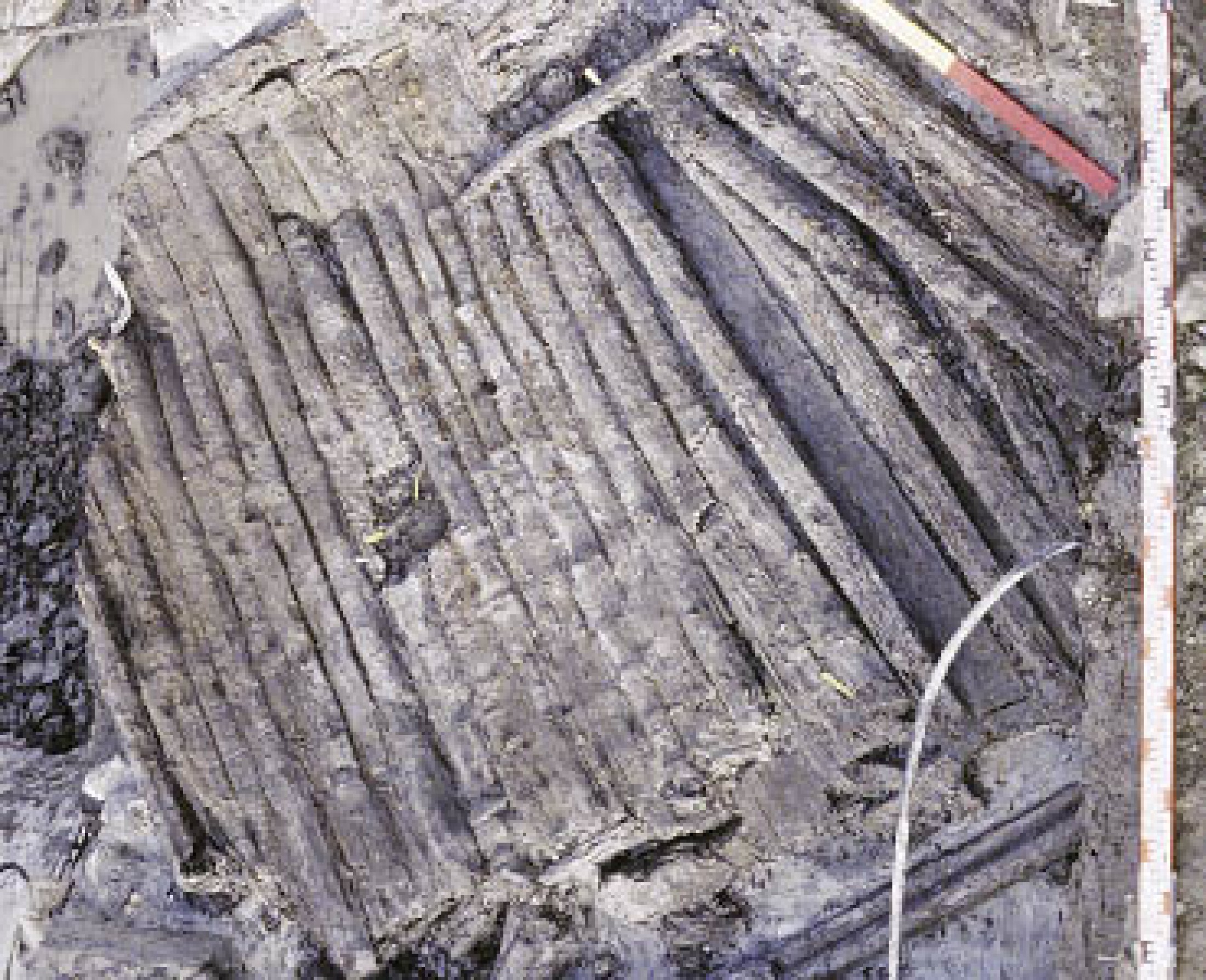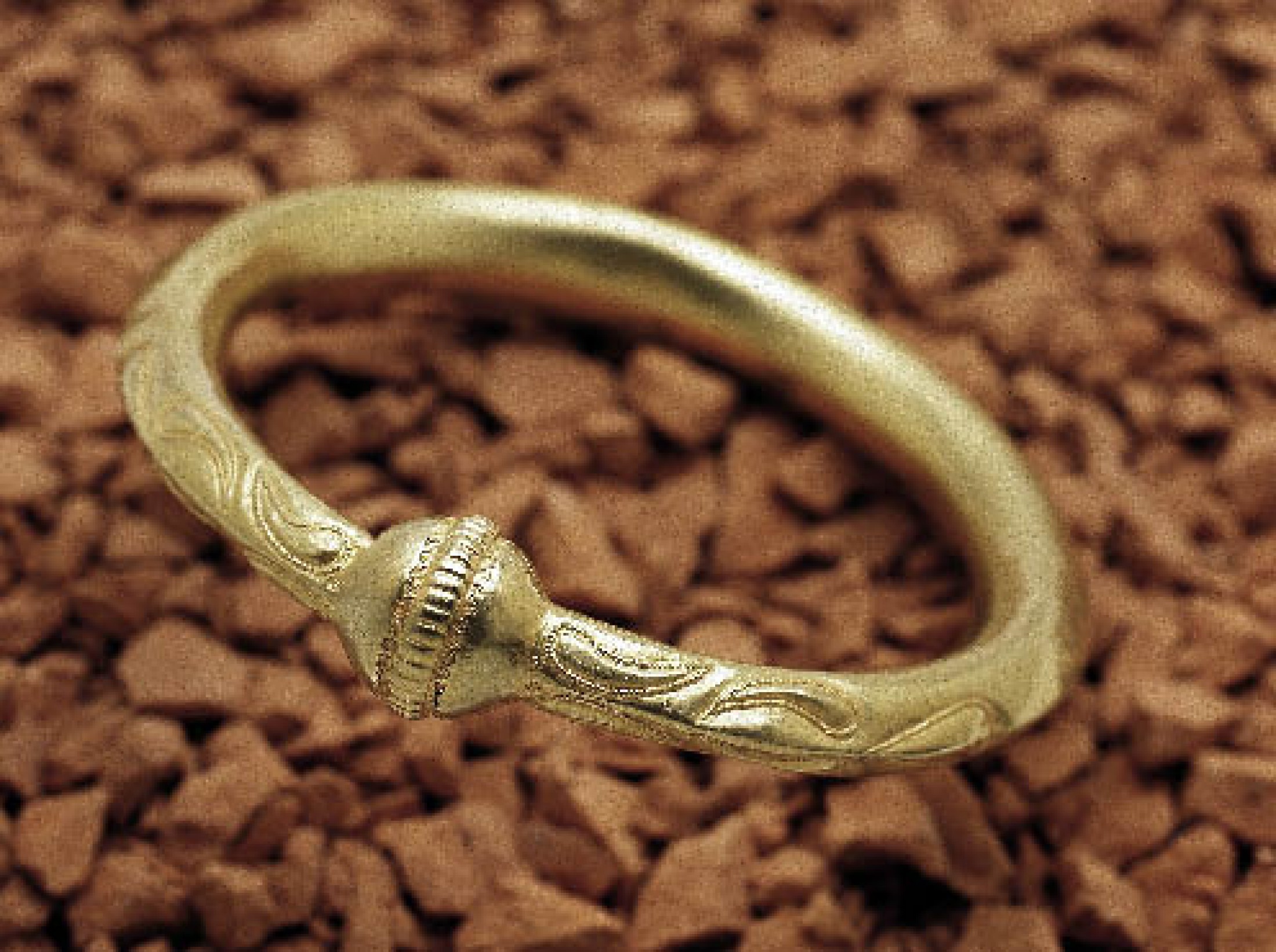The Duerrnberg burial sites
The earliest burial sites in Duerrnberg date to the first half of the 6th century BC. Three cemeteries date back to the Hallstatt-era: the Eislfeld, the Simonbauernfeld and the Hexenwandfeld. As a rule, the dead were buried under burial mounds with wood chambers in their centre. An almost intact burial chamber discovered in 2001 provided detailed information on the structure of such burial sites. The majority of burials were inhumations; very few dead were cremated before being buried. An almost intact burial chamber discovered in 2001 provided detailed information on the structure of such burial sites. The marked thinning of the grave groups from the 3rd century onwards was probably due to changes in burial customs. The salt production in Duerrnberg stopped at the latest in the 1st century BC.Clothing remains from the Hallstatt Period
Weaponry in the Hallstatt Period
Other burial objects in the Hallstatt Period
Clothing remains from the La Tène Period
Weapons as burial objects in the La Tène Period
Clothing remains from the Hallstatt Period
Metal costume accessories give information about the garments: women normally wore three fibulae to secure the clothes, several bracelets and ankle rings, and a bronze jewelled girdle. Girdles made entirely of sheet bronze and massive ankle rings worn in pairs appear towards the end of the Hallstatt Culture. A few women wore three large bronze double-spiral pins. The fibulae and girdle sheet of the men are basically the same as those worn by the women.Weaponry in the Hallstatt Period
The weapons of men comprise iron axes for close combat and a set of three throwing spears. Ornamented bronze axes are rarely found and were possibly used for ceremonial purposes. Iron daggers in ornate bronze scabbards were only discovered in a few graves in the Simonbauernfeld.Other burial objects in the Hallstatt Period
Almost every grave contained animal bones with an iron knife and a set of ceramic vessels, more rarely vessels made of sheet bronze. These finds are the remains of food offerings as provisions for the journey into the afterlife The grave goods bear witness to existing long-distance trade: amber from the Baltic countries used to manufacture jewellery or bronze vessels from the Mediterranean region are most certainly to be considered signs of considerable wealth.Clothing remains from the La Tène Period
As in nearly the whole of Central Europe, a new art style appears in the middle of the 5th century BC, accompanied by new costume and armament customs. The transition from the Early to the Late Iron Age apparently occurred without discernable disruption. The old cemeteries continued to be used and were only very slowly replaced by new burial sites located farther north.Women now wore a large number of fibulae. The Duerrnberg yielded many of the fantastically ornate fibulae in the form of animals or human beings. The hair nets frequently used in the Hallstatt Culture were replaced by bronze circlets; the bracelets and ankle rings were no longer worn in pairs.
Weapons as burial objects in the La Tène Period
The armament of the La Tène period consisted of an iron sword worn on the right side of the body and a single spear, sometimes combined with a helmet made of bronze or iron.(S. Moser)





